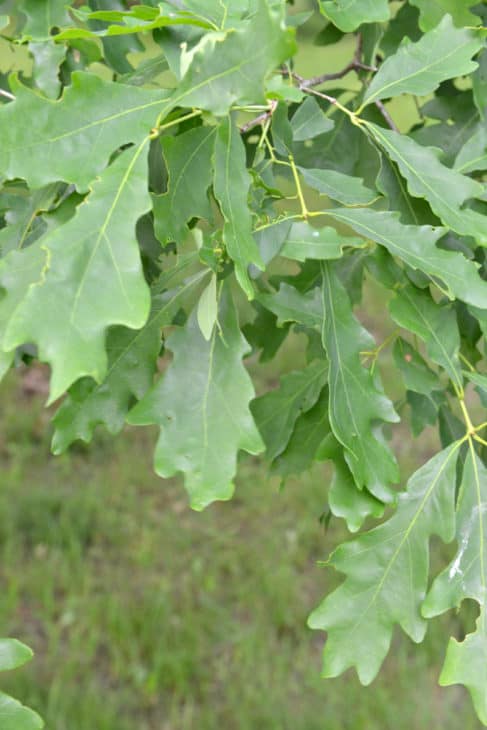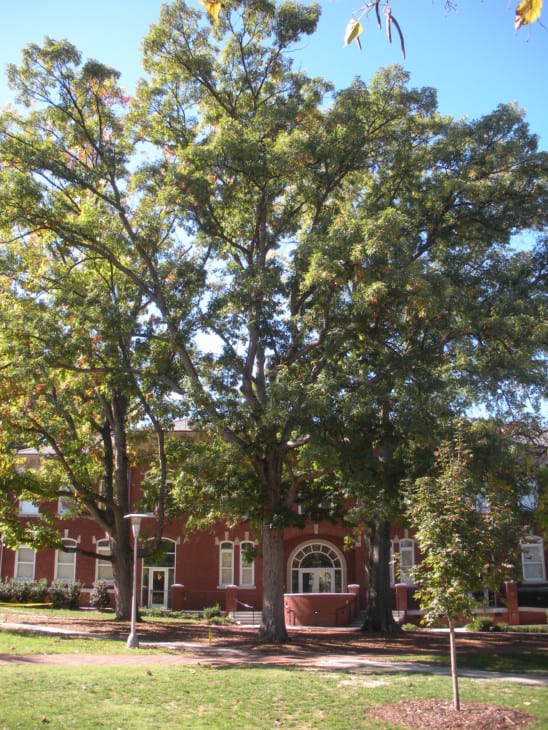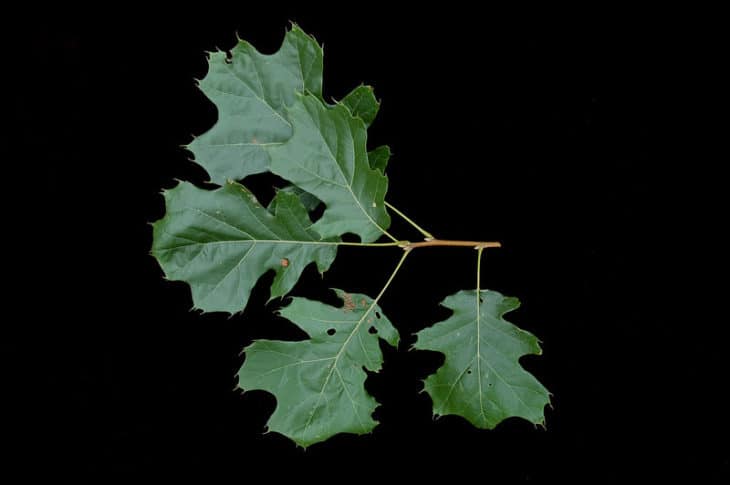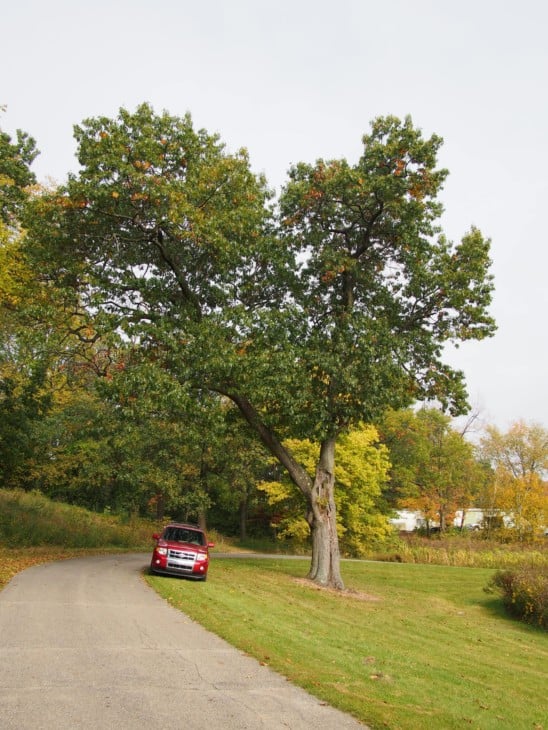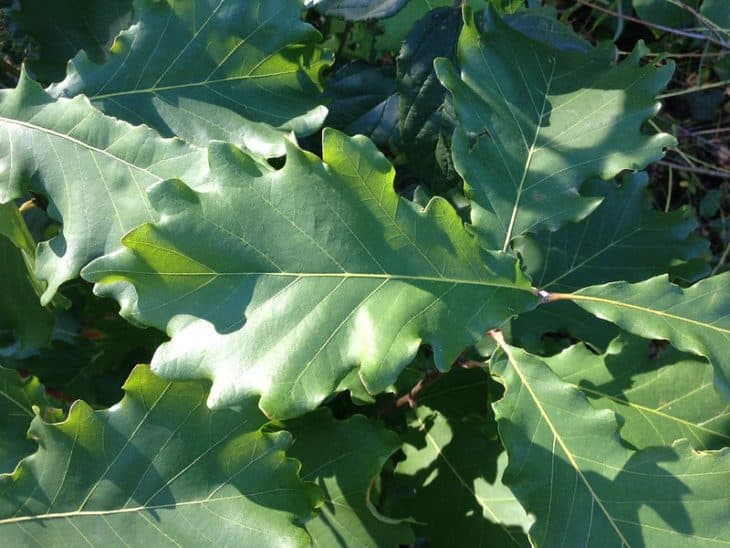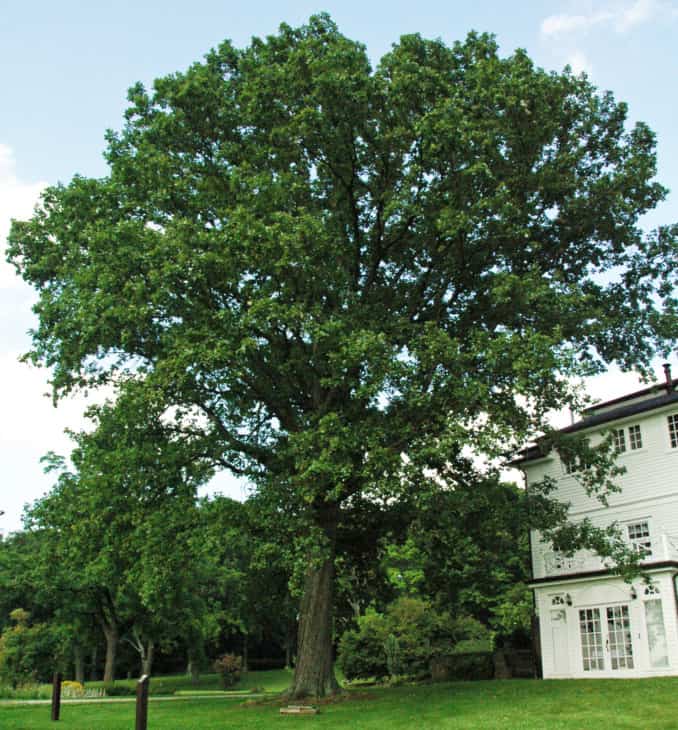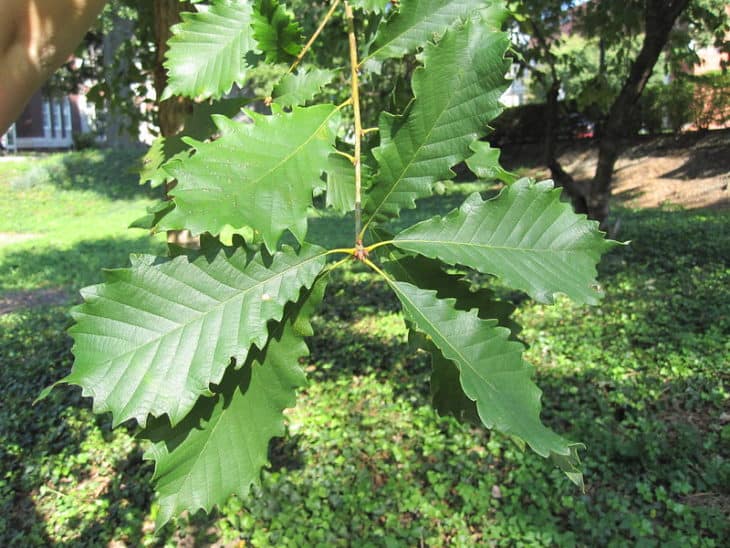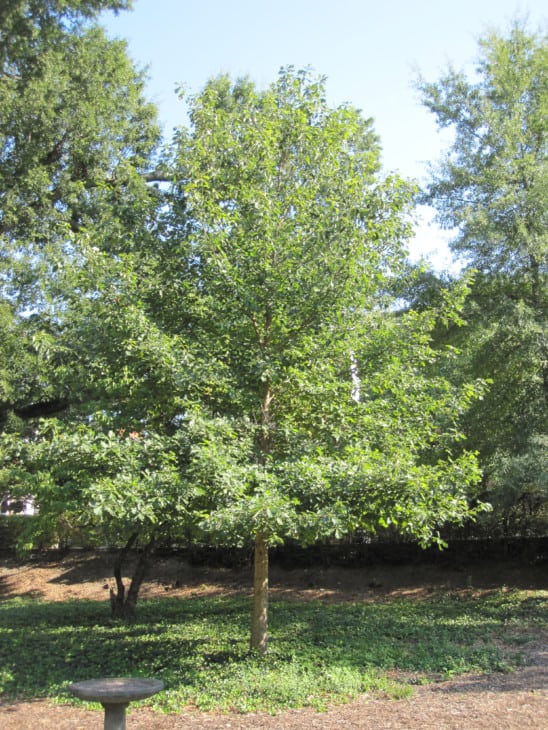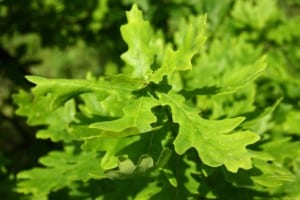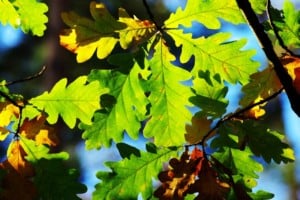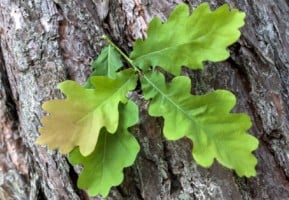Oak Trees are inarguably one of the finest garden specimens for people looking for robust, durable trees. After all, the average Oak Tree lives up to 200 years. In some cases, Oak varieties can also live up to 300 years. So, do you want to plant an Oak in your Connecticut home? Read on to learn everything about the types of Oak Trees in Connecticut!
Contents
Native to the Northern Hemisphere and the high altitudes in the tropics, Oaks are robust, deciduous or evergreen trees that belong to the Quercus genus. They are quite popular in the timber industry because of their durable wood used to produce furniture, ships, floors, musical instruments, and more.
Oak Trees are stately, tall, and attractive trees with typically deciduous leaves that come in various hues and shapes and develop varied fall colors, such as red, copper, yellow, purple, and brown. They feature monoecious spring blooms that grow in separate male and female catkins. The flowers often give way to copious crops of acorns that are devoured by wildlife, including cows, birds, rodents, and other animals. Some Oaks produce sweet-tasting acorns that can be consumed after roasting.
In Connecticut, the weather is typically conducive to the growth of Oak Trees. The southern and coastal sides of the state experience cool winters and the middle and lower East Coast experience long, hot, and humid summers. Meanwhile, the Northern side also experiences hot, humid summers followed by cold winters.
The landscape is also quite diverse and includes rivers, waterfalls, sandy shores, lakes, rocky coastlines, forests, and more. The state is home to a wide array of ornamental trees, including Maples, Cherry Trees, Pines, and Oaks. If you wish to grow an Oak Tree in your Connecticut home, plant it in full sun in medium moist, fertile, organic, free-draining soil. You might have to wait about 20 years for the first crop of acorns to show but till then you can benefit from the tree’s fall foliage and attractive form.
Here are the types of Oak Trees in Connecticut that you can grow in your home garden:
1. Eastern White Oak (Quercus Alba)
Native to the eastern United States, White Oak is a deciduous tree with a pyramidal to rounded crown. This ornamental specimen grows up to 50 to 80 feet tall. It is decked with dark green, lobed foliage that develops brown and dark red hues in autumn. This tree also yields non-showy, greenish-yellow spring flowers. The blooms give way to wart-scaled, cupped, oval acorns. Plant your White Oak in acidic, free-draining, moist, fertile soils in a sunlit area.
2. Northern Red Oak (Quercus Rubra)
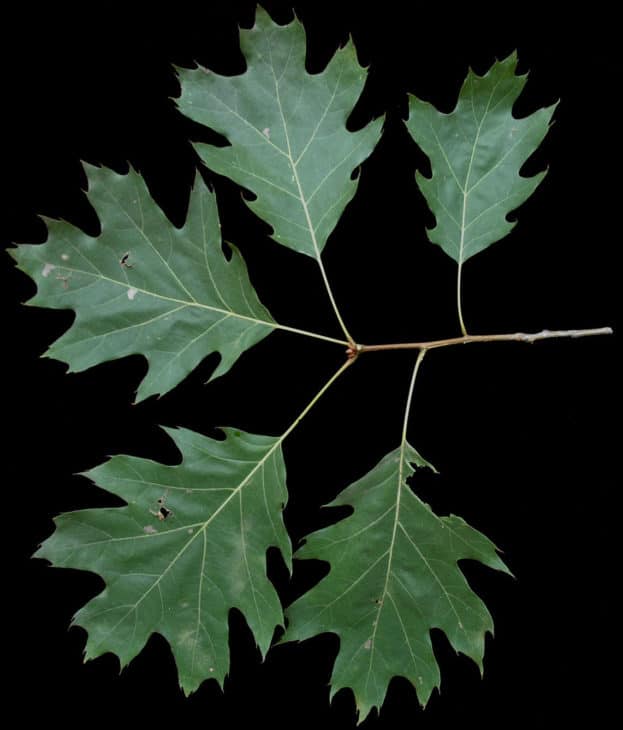
Northern Red Oak is an eastern North American native with a wide-spreading, irregular crown. This deciduous tree grows up to a height of 50 to 75 feet. It produces non-showy, monoecious spring blooms that give way to round pomes with flat, saucer-shaped cups. Red Oak features sharp-edged, dark green, lustrous, lobed foliage that develops a reddish-brown color in autumn. This durable specimen thrives in free-draining, medium moist, rich, acidic soils in sunlit spaces.
3. Eastern Black Oak (Quercus Velutina)
Native to the Eastern United States and southeastern Canada, Eastern Black Oak is a deciduous specimen with a broad, globular crown. This 50 to 60 feet tall tree has a black-hued dark contrasted by its yellowish-brown to dull red autumn foliage. This tree features shiny, green, leathery, lobed, bristle-edged leaves and insignificant spring blooms that give way to elliptic acorns. Grow your Black Oak in sunlit areas in rich, moist, free-draining soils.
4. Swamp White Oak (Quercus Bicolor)
Native to Northeastern North America, Swamp White Oak is a deciduous specimen with a stout trunk and wide-spreading, rounded crown. This 50 to 60 feet tall ornamental tree grows non-showy spring blooms that give way to distinctive acorns. It also features dark green, shiny, blunt-edged leaves with silvery-white bottoms. The foliage turns reddish-purple and yellow in autumn. Plant this drought-resistant tree in a sunlit area in free-draining, wet, acidic soils.
5. Bur Oak (Quercus Macrocarpa)
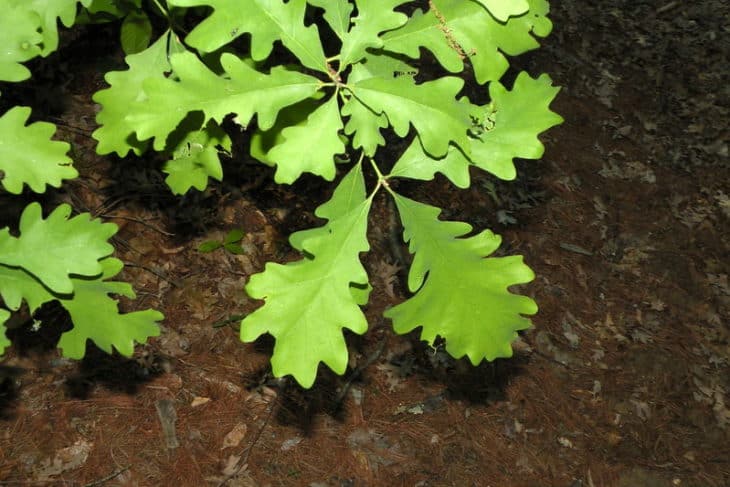
Bur Oak is a tall, attractive, deciduous specimen with a broad-spreading, rounded crown decked with insignificant, yellowish-green flowers that grow in separate catkins. Also known as Mossy-Cup Oak Tree, this Oak variety grows up to 60 to 80 feet tall. It features dark green, leathery, lobed foliage that shows a yellowish-brown hue in autumn. It also yields rounded or oval acorns with mossy, scaly, fringed cups. Bur Oak thrives in sun-kissed spaces in moist, free-draining soils.
6. Chestnut Oak (Quercus Michauxii)
Native to the southeastern US, Swamp Chestnut Oak features a tight, narrow, rounded crown that is decked with shiny, green, obovate, teethed leaves with grayish, hair undersides and wavy margins. Chestnut Oak is a deciduous 40 60 feet tall tree that grows non-showy blooms. The monoecious flowers give way to acorns with hairy, grayish-brown, scaled acorns. This tree thrives in sunlit areas in moist, free-draining, acidic soils.
7. Scarlet Oak Leaf (Quercus Coccinea)
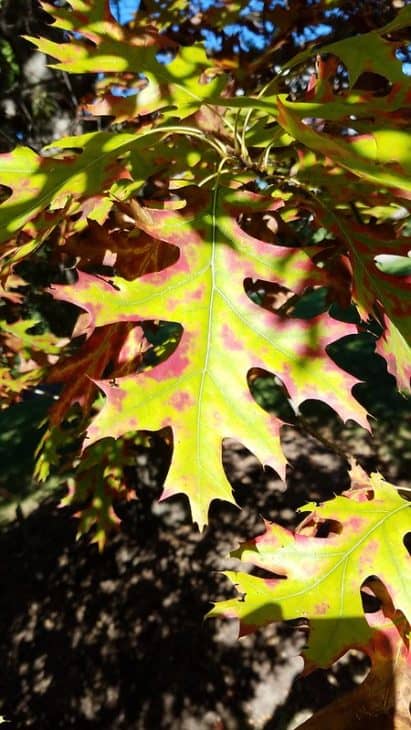
Scarlet Oak Leaf is a stately 70 feet tall tree that grows wonderfully in sunlit areas and dry, free-draining, acidic, sandy soils. This deciduous tree is a southeastern Missouri native with an open, rounded crown. It yields insignificant, monoecious blooms that grow in separate catkins and gives way to acorns. It also has pointy, lobed, large, deeply bristle-tipped, glossy green foliage that turns scarlet in fall.


